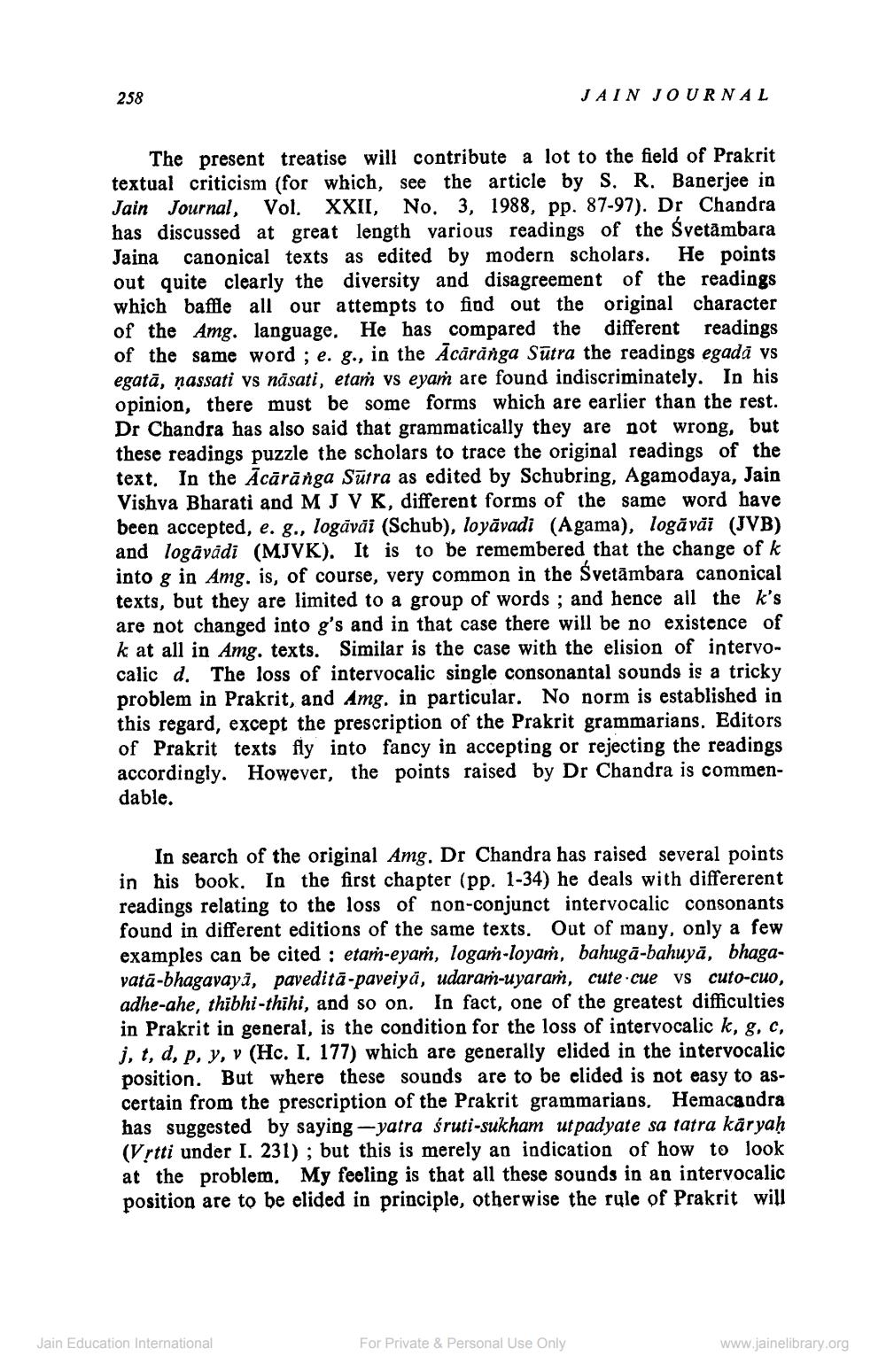________________
258
JAIN JOURNAL
The present treatise will contribute a lot to the field of Prakrit textual criticism (for which, see the article by S. R. Banerjee in Jain Journal, Vol. XXII, No. 3, 1988, pp. 87-97). Dr Chandra has discussed at great length various readings of the Svetämbara Jaina canonical texts as edited by modern scholars. He points out quite clearly the diversity and disagreement of the readings which baffile all our attempts to find out the original character of the Amg. language. He has compared the different readings of the same word; e. g., in the Acāranga Sūtra the readings egadā vs egatā, nassati vs näsati, etaṁ vs eyam are found indiscriminately. In his opinion, there must be some forms which are earlier than the rest. Dr Chandra has also said that grammatically they are not wrong, but these readings puzzle the scholars to trace the original readings of the text. In the Ācārānga Sūtra as edited by Schubring, Agamodaya, Jain Vishya Bharati and M J V K, different forms of the same word have been accepted, e. g., logāvāi (Schub), loyāvadi (Agama), logāväï (JVB) and logāvādi (MJVK). It is to be remembered that the change of k into g in Amg. is, of course, very common in the Svetāmbara canonical texts, but they are limited to a group of words; and hence all the k's are not changed into g's and in that case there will be no existence of k at all in Amg. texts. Similar is the case with the elision of intervocalic d. The loss of intervocalic single consonantal sounds is a tricky problem in Prakrit, and Amg. in particular. No norm is established in this regard, except the prescription of the Prakrit grammarians. Editors of Prakrit texts fly into fancy in accepting or rejecting the readings accordingly. However, the points raised by Dr Chandra is commendable.
In search of the original Amg. Dr Chandra has raised several points in his book. In the first chapter (pp. 1-34) he deals with differerent readings relating to the loss of non-conjunct intervocalic consonants found in different editions of the same texts. Out of many, only a few examples can be cited : etaṁ-eyar, logam-loyaṁ, bahugā-bahuyā, bhagavatā-bhagavayi, paveditā-paveiya, udaram-uyaraṁ, cute cue vs cuto-cuo, adhe-ahe, thibhi-thihi, and so on. In fact, one of the greatest difficulties in Prakrit in general, is the condition for the loss of intervocalic k, g, c, j, t, d, p, y, v (Hc. I, 177) which are generally elided in the intervocalic position. But where these sounds are to be elided is not easy to ascertain from the prescription of the Prakrit grammarians. Hemacandra has suggested by saying - yatra śruti-sukham ut padyate sa tatra karyaḥ (Vrtti under I. 231) ; but this is merely an indication of how to look at the problem. My feeling is that all these sounds in an intervocalic position are to be elided in principle, otherwise the rule of Prakrit will
Jain Education International
For Private & Personal Use Only
www.jainelibrary.org




